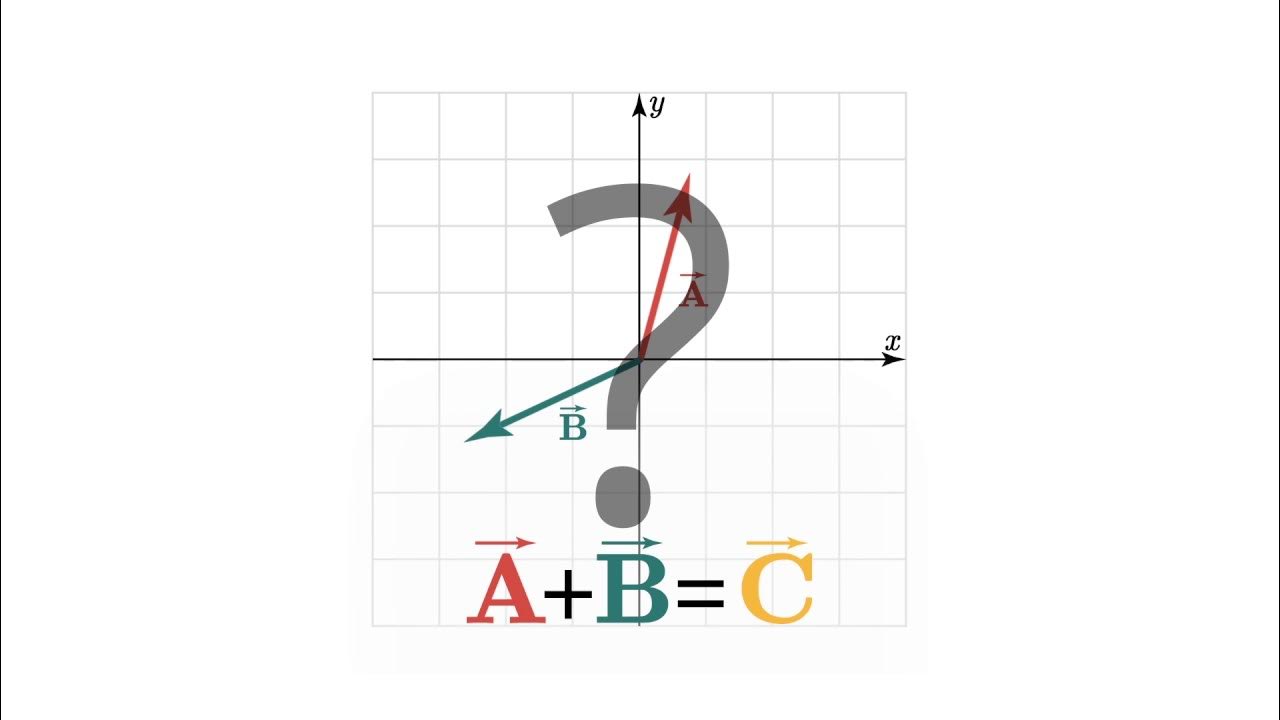Operasi Vektor Secara Analitik dan Geometri (Vektor Bagian 3) Matematika Peminatan Kelas 10
Summary
TLDRIn this educational video, Handayani explains vector operations, including vector addition, subtraction, and scalar multiplication, both algebraically and geometrically. The video covers 2D and 3D vectors, demonstrating how to add, subtract, and multiply vectors by scalars using clear examples. It also introduces geometric methods like the triangle and parallelogram rules for addition and subtraction. The video offers step-by-step instructions to help learners understand vector relationships and apply them in practical scenarios, including problems related to hexagons and scalar multiples. Perfect for students seeking a solid understanding of vector operations in mathematics.
Takeaways
- 😀 Vectors can be added, subtracted, or multiplied by scalars both algebraically and geometrically.
- 😀 For vector addition in 2D, simply add the corresponding components: (a + c, b + d) for vectors u and v.
- 😀 In 3D, vector addition follows the same principle, adding corresponding components (a + d, b + e, c + f).
- 😀 Vector subtraction in both 2D and 3D is similar to addition, but involves subtracting corresponding components.
- 😀 Geometrically, vector addition can be visualized using the triangle rule or parallelogram rule, which show how vectors combine visually.
- 😀 The triangle rule: Place the tail of the second vector at the head of the first vector, and draw the resulting vector from the tail of the first to the head of the second.
- 😀 The parallelogram rule: Place both vectors tail to tail, then complete a parallelogram, with the diagonal representing the sum of the vectors.
- 😀 Scalar multiplication involves multiplying each component of a vector by a scalar, affecting the vector’s length and direction based on the sign of the scalar.
- 😀 A positive scalar keeps the vector in the same direction, while a negative scalar reverses its direction.
- 😀 When multiplying a vector by a scalar geometrically, it involves repeating the vector the number of times indicated by the scalar (e.g., three times for a scalar of 3).
Q & A
What is the basic method for adding vectors algebraically in 2D?
-To add two vectors algebraically in 2D, simply add their corresponding components. If vector U = (a, b) and vector V = (c, d), then the sum of the vectors U + V is calculated as (a + c, b + d).
How do you add vectors algebraically in 3D?
-In 3D, the method is similar to 2D. If vector U = (a, b, c) and vector V = (d, e, f), then their sum U + V is calculated as (a + d, b + e, c + f).
How is vector subtraction performed algebraically?
-Vector subtraction is performed similarly to addition. To subtract vector V from vector U, subtract their corresponding components. For example, if U = (a, b) and V = (c, d), then U - V = (a - c, b - d).
What is the geometric interpretation of vector addition using the triangle rule?
-In the triangle rule, to add two vectors, place the tail of the second vector at the head of the first. Then, the sum of the vectors is the vector from the tail of the first to the head of the second.
How does the parallelogram rule differ from the triangle rule for vector addition?
-The parallelogram rule involves placing both vectors with their tails at the same point. Then, you complete a parallelogram, and the diagonal from the common tail to the opposite corner represents the sum of the vectors.
What happens when you subtract a vector geometrically?
-To subtract vector V from U geometrically, you add the negative of vector V to vector U. This is done by reversing the direction of vector V and then using the triangle or parallelogram rule for addition.
How do you perform scalar multiplication algebraically?
-In scalar multiplication, each component of the vector is multiplied by the scalar. For example, if vector U = (a, b) and scalar k = 3, then the result of 3 * U is (3a, 3b).
What is the effect of a negative scalar on vector direction and magnitude?
-A negative scalar reverses the direction of the vector while multiplying its magnitude by the absolute value of the scalar. For example, multiplying a vector by -2 will make it point in the opposite direction and double its length.
What is the result of adding two vectors geometrically using the triangle rule if their directions are opposite?
-If two vectors are in opposite directions, the triangle rule will result in a smaller resultant vector. The magnitude will depend on the difference in their lengths, and the direction will be towards the vector with the greater magnitude.
Can you explain a real-life application where vector addition and subtraction are used?
-In physics, especially in mechanics, vector addition and subtraction are used to calculate the resultant force when multiple forces are acting on an object. The forces can be represented as vectors, and their addition or subtraction helps determine the net force and its direction.
Outlines

هذا القسم متوفر فقط للمشتركين. يرجى الترقية للوصول إلى هذه الميزة.
قم بالترقية الآنMindmap

هذا القسم متوفر فقط للمشتركين. يرجى الترقية للوصول إلى هذه الميزة.
قم بالترقية الآنKeywords

هذا القسم متوفر فقط للمشتركين. يرجى الترقية للوصول إلى هذه الميزة.
قم بالترقية الآنHighlights

هذا القسم متوفر فقط للمشتركين. يرجى الترقية للوصول إلى هذه الميزة.
قم بالترقية الآنTranscripts

هذا القسم متوفر فقط للمشتركين. يرجى الترقية للوصول إلى هذه الميزة.
قم بالترقية الآن5.0 / 5 (0 votes)






